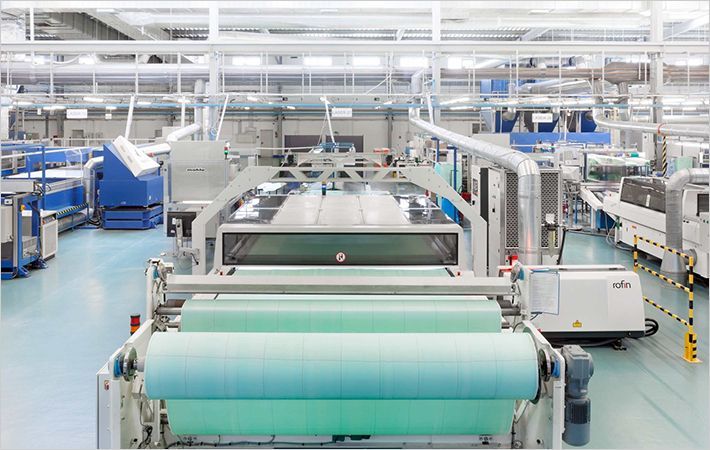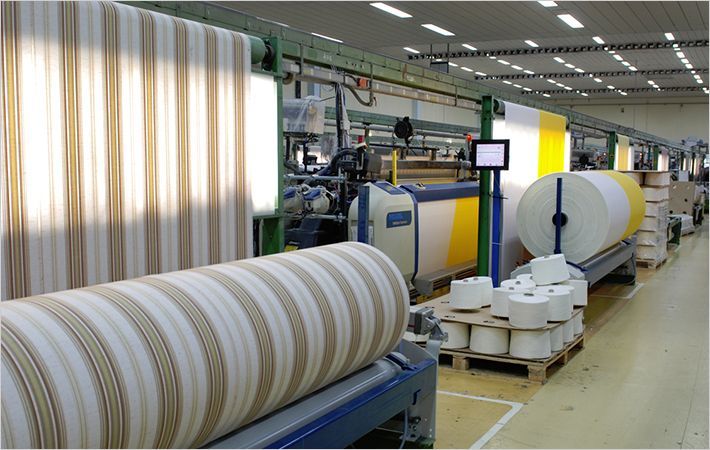The European Centre for Innovative Textiles (CETI) - commissioned the study Innovative Textiles 2030 from the Economic Observatory of the IFM (French Fashion Institute), the results of which will be presented during the inauguration of the centre on Wednesday 10 October 2012.
This unique study is the result of cooperation between various sectors: it explores how we will live, travel, dress and care for our health in 2030 and how textiles will contribute to this. Fantasy or reality, it is possible to envisage various different scenarios for the development of the worldwide market for innovative textiles and the perspectives for European textile firms. The European Centre for Innovative Textiles (CETI) - commissioned the study Innovative Textiles 2030 from the Economic Observatory of the IFM (French Fashion Institute), the results of which will be #
The challenges are multiple: development and will be met by a dynamic of multi-sector cooperation. Does this invasion into all sectors by innovative textiles herald a sort of new industrial revolution?
The technical textiles and non-wovens industry is characterized by the wide diversity of raw materials and processes used, as well as highly complex products and applications.
Advanced textiles are being increasingly integrated into the materials designed as a result of the synergy of different sectors. Textiles offer high added value in that they allow otherwise unimaginable new materials to be designed.
The worldwide turnover of the technical textiles industry was 133 billion dollars in 2011, representing a volume of 25 million tonnes, which is a third of the total volume of textile fibres consumed each year. The growth has been spectacular, multiplied by 5 since the 1960s, and will continue to increase at an average annual rate of 4 to 5 per cent.
Second in Europe after Germany, France is one of the market leaders with a turnover of 5.4 billion Euros from a core target of 355 French businesses with exports averaging 29.9%.
The transport market which represents a historically large share of technical textile production, is on the downwards trend (at around 21%), while applications are becoming more diverse: there has been considerable growth in the sports and leisure, health care and well-being and safety equipment sectors, as well as in cutting edge industrial applications, the demands of which can only be met by textiles.
Europe is the main producer of nonwovens, with an increase in production from 40 000 tonnes in 1970 to almost 2 million tonnes in 2011. Historically, the nonwovens industry is organized differently to the textiles industry in that it aims to produce large volumes rapidly at the lowest possible cost.
As regards their applications, nonwovens are above all used for disposable products used in health care, filtration and protection. Europe nevertheless has a strong advantage in the market for durable nonwovens, producing 854 000 tonnes per year in 2011 compared to 476 000 tonnes in the USA. In the developed world, the growth of durable nonwovens is around 5 per cent driven by the geotextiles, automotive and construction markets, with opportunities for new high tech applications.
Textiles research seeks to improve such functionalities as absorbance, resilience, elasticity, softness and strength as well as washability, filtration and sterilisation abilities. It will allow a new generation of technical textiles to emerge for new critical applications. Certain developments will also have an impact on woven or knitted textiles as the new fibres developed will be able to be spun into filaments or long fibres, thus laying the foundations for a new generation of clothing whose performance matches up to consumer aspirations.
As regards nanotechnologies, the textiles industry is focusing on two aspects: fibres and treatments. The Nano fibres market is the object of much attention from world leaders in the healthcare, transport, energy and defence sectors. This market was estimated at 140 million dollars in 2010 , and should attain 2 billion dollars in 2020, with growth at over 30% per year.
These technological changes are stimulating the European technical textiles industry which is now turning towards products with high added value, produced in smaller volumes and driven by a need for «customized» performance. The development of new materials makes it essential to design new equipment that is capable of developing these products.
This is the purpose of the CETI (European Centre for Innovative Textiles)es) which offers both equipment for drylaid and meltblown nonwovens and tri-component spinning machines all on the same site. A second phase will see the installation of braiding, knitting, weaving, functionalising and finishing tools, making CETI the benchmark of industrial regeneration.
The European Centre for Innovative Textiles (CETI)

